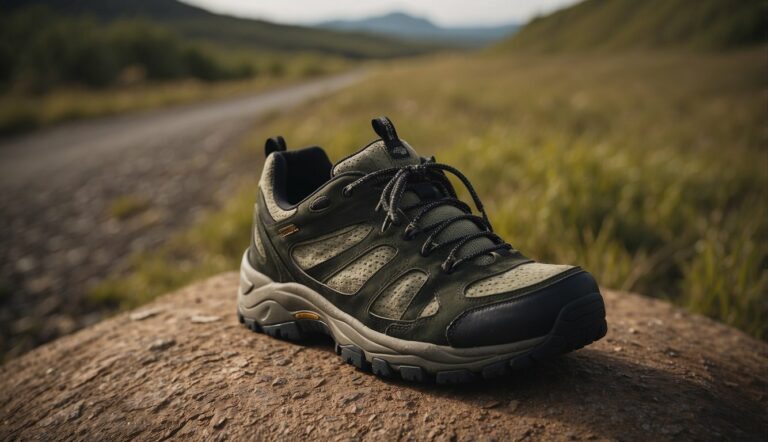Trail Running and Plantar Fasciitis: Key Tactics for Effective Prevention and Management
Trail running offers a unique communion with nature, but it also presents its own set of challenges, especially to our feet. Plantar fasciitis, characterized by a sharp pain at the bottom of the heel, is a common issue that can sideline runners due to inflammation of the plantar fascia, a thick band of tissue that connects the heel bone to the toes. As a UESCA certified running coach with extensive experience on the trails, I’ve seen how critical it can be to both prevent and manage this condition to maintain a healthy, active lifestyle.
Managing plantar fasciitis begins with understanding the importance of proper footwear, incorporating specific stretching routines, and adjusting running techniques to minimize stress on the feet. Prevention strategies such as choosing shoes with adequate support, avoiding sudden increases in mileage or intensity, and ensuring proper foot mechanics are integral to avoiding the onset of plantar fasciitis. Mobility exercises, particularly for the Achilles tendon and calf muscles, can also contribute significantly to prevention efforts.
When symptoms do emerge, timely and appropriate management is key to a swift recovery. This includes rest, ice, compression, and elevation (RICE), combined with targeted exercises to strengthen the foot and ankle. Custom orthotics and night splints might also be recommended to provide extra support and facilitate healing. Adhering to a strategic treatment plan can help reduce pain and inflammation, allowing for a gradual return to trail running, while also mitigating the risk of re-injury.
Plantar Fasciitis and Trail Running – What’s the Connection?
As a UESCA certified running coach, I’ve seen the impact of plantar fasciitis on trail runners firsthand. Recognizing the importance of understanding this condition, let’s explore its anatomy, causes, and the signs that accompany it.
Anatomy and Causes
Plantar fasciitis is characterized by inflammation of the connective tissue in the foot known as the plantar fascia. This thick band of tissue supports the arch and extends from the heel to the toes.
Common causes include repetitive impact from running, especially on uneven surfaces like trails, which can strain the fascia. Other contributors can be inadequate footwear, excessive pronation, or a tight Achilles tendon which applies additional stress to the plantar fascia.
Key Causes:
- Repetitive impact from running
- Improper footwear
- Excessive foot pronation
- Tight Achilles tendon
Symptoms and Diagnosis
The primary symptom of plantar fasciitis is heel pain, which is often most intense with the first steps in the morning or after a long period of rest. The pain may also flare up after prolonged activity but typically worsens following the activity, not during.
To diagnose plantar fasciitis, a physical examination is essential. My role involves evaluating a runner’s symptoms and medical history, conducting a foot examination, and sometimes recommending imaging tests to rule out other issues. An accurate diagnosis is key to an effective treatment plan.
Primary Symptoms:
- Sharp heel pain in the morning
- Pain after periods of rest
- Increased pain after, not during, activity
Diagnosis Protocol:
- Evaluate symptoms and medical history
- Conduct a thorough foot examination
- Recommend imaging tests if necessary
Prevention Strategies for Plantar Fasciitis for Trail Runners
As a UESCA certified running coach with firsthand experience managing plantar fasciitis, I can attest that taking a proactive approach is paramount. Here’s how to keep your trail running free from the clutches of this common ailment.
Footwear and Orthotics
Selecting the right running shoes is critical to prevention. Look for shoes with adequate support, especially in the arch area. It’s important to replace them before they are overly worn out, typically after 300-500 miles of use. In cases where additional support is needed, orthotics can be beneficial. Custom or over-the-counter orthotics may provide the necessary arch support to alleviate stress on the plantar fascia.
- Shoe Checklist:
- Cushioned soles
- Proper arch support
- Room for toe movement
Training Modifications
Managing physical activity levels is essential to avoid overuse, a key risk factor for plantar fasciitis. This means incrementally increasing the intensity and duration of runs. It’s also wise to incorporate rest days and cross-training to give the plantar fascia time to recover, thus reducing the chance of injury.
- Training Tips:
- Gradually increase trail running distance
- Introduce low-impact activities like swimming or cycling
- Observe rest days
Strength and Flexibility Exercises
To further lower your risk, incorporate stretching exercises targeting the Achilles tendon and plantar fascia into your routine. Strengthening the muscles of the lower leg can provide better support for the foot. Consistent flexibility exercises reduce tightness and improve overall foot health.
- Key Exercises:
- Calf raises
- Plantar fascia stretches (pull toes back toward shin)
- Achilles tendon stretches
By employing these prevention tactics, I help runners minimize the risk of developing plantar fasciitis and enjoy trail running to its fullest.
Treatment Approaches for Plantar Fasciitis
I’ve found that managing plantar fasciitis effectively involves a combination of initial self-care methods, more advanced treatments if necessary, and professional care for persistent cases.
Initial Treatments
At the first sign of heel pain, I advise my runners to begin with simple, at-home care. This includes:
- Rest: Avoid activities that exacerbate the pain, especially those involving hard surfaces or impact.
- Ice: Apply an ice pack to the affected area for 15-20 minutes, several times a day to reduce inflammation.
- Massage: Gently massaging the arch and heel can provide relief.
- Stretching Exercises: Stretching the Achilles tendon and plantar fascia can improve flexibility and lessen pain.
- Anti-inflammatory Medication: Over-the-counter meds like ibuprofen may relieve pain and inflammation.
Advanced Options
When initial treatments don’t provide enough relief, consider these options:
- Night Splints: They gently stretch the calf and plantar fascia overnight.
- Physical Therapy: A physical therapist can provide a regimen tailored to your condition.
- Orthotics: Custom or over-the-counter shoe inserts can redistribute pressure and provide support.
Professional Care
If pain persists, it’s time to consult a professional. Potential treatments may include:
- Podiatrist Visit: They can assess your condition and recommend a targeted treatment plan.
- Corticosteroid Injections: These may be offered to reduce inflammation when other treatments have failed.
- Platelet-Rich Plasma: An emerging treatment, it involves injecting plasma to promote healing.
- Surgery: As a last resort, surgical options can be discussed with a specialist.
Managing Plantar Fasciitis for Runners
As a UESCA certified running coach, I understand the challenges runners face when dealing with plantar fasciitis. The key is to merge appropriate running techniques with effective post-run recovery strategies to manage the condition.
Running with Plantar Fasciitis
When running with plantar fasciitis, modifying your technique can mitigate pain and prevent further injury.
Firstly, it’s essential to choose running shoes with proper arch support and cushioning. During the run, focus on maintaining a mid-foot strike to reduce heel impact. Include low-impact cross-training, like cycling or swimming, to maintain fitness while reducing foot stress.
Important Tips:
- Choose Supportive Footwear: Shoes tailored for arch support.
- Adopt a Mid-Foot Strike: Avoid heavy heel striking.
- Incorporate Low-Impact Cross-Training: Preserve overall fitness.
Post-Run Recovery Techniques
Recovery plays a crucial role in managing plantar fasciitis for runners. After each run, stretching the calf muscles and the plantar fascia is essential to maintaining flexibility and relieving tension. Ice your heel for 10-15 minutes to reduce inflammation. Lastly, regular massage or use of a foam roller can be beneficial for keeping the fascia supple.
Recovery Checklist:
- Stretch: Focus on the calves and arches.
- Ice: Apply to the heel post-run to decrease swelling.
- Massage: Use a foam roller to maintain fascia flexibility.
By incorporating these targeted strategies into your routine, you can manage plantar fasciitis effectively while continuing to enjoy running.
Long-Term Health and Lifestyle Considerations

Incorporating strategies for maintaining foot health and making crucial lifestyle changes are vital for long-term management and prevention of plantar fasciitis, especially for trail runners who frequently navigate uneven terrain.
Maintaining Foot Health
To support foot health and reduce the risk of overuse injuries like plantar fasciitis, I recommend a focus on functional strength and flexibility.
Developing a strong base includes exercises that enhance ankle range of motion and strengthen the supporting muscles. Regular stretching before and after runs promotes flexibility and helps maintain proper foot functionality. Here’s a simple table that summarizes key exercises for foot health:
| Exercise Type | Description | Frequency |
|---|---|---|
| Toe Stretch | Stretch toes to enhance flexibility in the plantar fascia | Daily |
| Heel Drops | Lower heels off a step to increase ankle range of motion | Daily |
| Towel Curls | Grip a towel with your toes to strengthen foot muscles | 3x per week |
Lifestyle Changes for Prevention
To prevent plantar fasciitis, I advocate for gradual adjustments in body weight if necessary to minimize impact on the feet. Thoughtful rehabilitation pacing is also essential, as returning to trail running too quickly after an injury can lead to recurrence. Integration of low-impact cross-training activities, such as cycling or swimming, can aid in maintaining cardiovascular fitness without excessive stress on the feet.
| Lifestyle Change | Benefit |
|---|---|
| Weight Management | Reduces impact on feet during runs |
| Cross-Training | Allows continued exercise while limiting foot stress |






